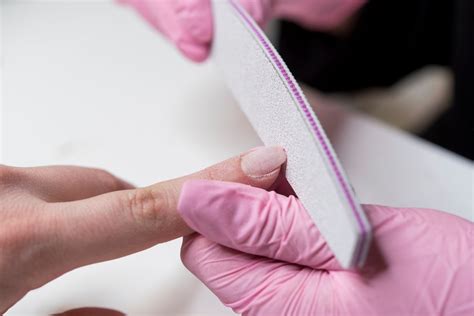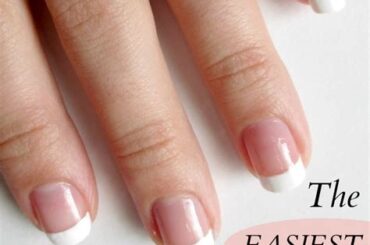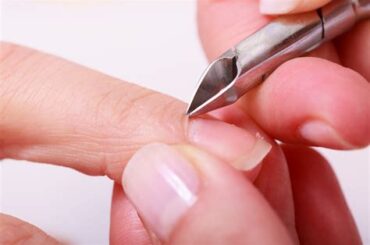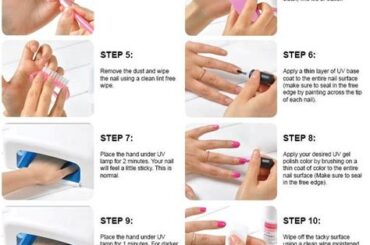Learn how to choose, use, and care for the right nail file for healthy, beautiful nails. Say goodbye to damaged nails with expert filing techniques.
Choosing the Right Nail File
When it comes to choosing the right nail file, it’s important to consider the grit of the file. The grit refers to the coarseness of the file, and different grits are used for different purposes. A higher grit number indicates a finer file, which is ideal for shaping and smoothing natural nails. On the other hand, a lower grit number indicates a coarser file, which is better for shaping and shortening artificial nails.
Another factor to consider when choosing a nail file is the material it’s made of. Emery boards, metal, and glass are common materials used for nail files. Emery boards are gentle and ideal for natural nails, while metal and glass files are best for artificial nails. It’s important to choose a file that is suitable for your nail type to avoid damaging your nails.
Lastly, consider the size and shape of the nail file. Files come in various shapes and sizes, such as rectangular, oval, and even curved. The size and shape of the file should be comfortable to hold and easy to maneuver, making it easier to achieve the desired nail shape.
Understanding Nail File Grit
Nail file grit is a crucial factor to consider when choosing the right nail file for your needs. The grit of a nail file refers to the roughness of its surface, which determines how effectively it can shape and smooth the nails. The grit of a nail file is usually indicated by a number, with higher numbers representing finer grit and lower numbers representing coarser grit. Understanding the grit of a nail file is essential for achieving the desired results without causing damage to the nails.
When choosing a nail file, it’s important to consider the grit that will best suit your nail care needs. For instance, if you have natural, healthy nails, a finer grit file, such as 240 or higher, would be more suitable for shaping and smoothing the nails without causing any damage. On the other hand, if you have artificial or acrylic nails, you may require a coarser grit file, such as 100 or lower, to efficiently shape and refine the nails. Understanding the nail file grit and its compatibility with your nail type is crucial for maintaining the health and appearance of your nails.
It’s important to note that using the correct nail file grit is essential for achieving a smooth and even nail surface. Using a file with the wrong grit can result in uneven surfaces, nail peeling, or damage to the nail bed. Additionally, using a file with an excessively coarse grit on natural nails can cause splitting and weakening of the nails. Therefore, understanding the nail file grit and its appropriate usage is essential for maintaining the overall health and appearance of your nails.
Using the Correct Technique
The Dos and Don’ts of Nail File Usage
When it comes to using a nail file, it’s important to understand the correct technique to avoid damaging your nails. The first step is to hold the nail file at a 45-degree angle and gently file in one direction. This helps to prevent splitting and peeling of the nails, giving them a smooth and even finish. It’s important to avoid using excessive force while filing, as this can weaken the nails and lead to breakage.
Using a gentle touch is also crucial when filing your nails. Pushing too hard can cause damage to the nail bed and surrounding skin, leading to pain and discomfort. Additionally, it’s essential to keep the nail file clean to prevent the transfer of bacteria and dirt onto your nails. Regularly cleaning the nail file with soap and water, or using a nail sanitizer, can help to maintain hygiene and prevent infections.
Lastly, it’s important to avoid using metal or glass files on your nails, especially if they are damaged or brittle. These types of files can cause further damage and should be avoided in favor of softer, more gentle alternatives. By following these dos and don’ts, you can ensure that your nails stay healthy and strong while using a nail file.
Filing in One Direction
When using a nail file, it’s important to always file in one direction. This helps to prevent the nail from becoming weak or damaged. Filing back and forth can cause the nail to fray and split, leading to potential breakage. By filing in one direction, you are able to shape the nail without causing unnecessary harm.
Another reason to file in one direction is to ensure a smooth and even finish. When you file back and forth, it can create an uneven surface, making it difficult to apply polish or achieve a clean look. By filing in one direction, you can achieve a more professional and polished result.
Additionally, filing in one direction helps to maintain the strength and integrity of the nail. When you file back and forth, it puts unnecessary stress on the nail, which can lead to weakness and potential issues such as cracking or breaking. By filing in one direction, you are able to maintain the strength and health of your nails.
Avoiding Excessive Force
The Dos and Don’ts of Nail File Usage
When it comes to nail file usage, it’s important to remember the importance of avoiding excessive force. Applying too much pressure while filing your nails can lead to damage and weakening of the nail. This can result in splitting, peeling, and breakage, which is the last thing we want for our nails.
Instead, opt for a gentle touch when using a nail file. Let the file do the work for you, and avoid pressing down too hard. Using a light touch not only prevents damage to the nail, but it also helps in achieving a smooth and even finish.
It’s also important to pay attention to the technique being used. Filing in a back-and-forth sawing motion with excessive force can cause the nail to fray and weaken. Instead, opt for a gentle, one-directional filing motion to ensure a clean and even result without applying excessive force.
Keeping the Nail File Clean
When it comes to keeping the nail file clean, it’s important to regularly clean and sanitize it to prevent the spread of bacteria and fungus. After each use, simply brush off any filings and debris with a nail brush or an old toothbrush. Then, wash the file with soap and water and let it air-dry completely before storing it away. Additionally, you can use a nail file disinfectant or rubbing alcohol to sanitize the file. It’s crucial to keep your nail file clean to ensure the health and safety of your nails.
Another important tip for keeping the nail file clean is to avoid sharing it with others. Sharing nail files can easily transfer bacteria and fungus between individuals, leading to potential infections. It’s best to have your own personal nail file and not to use anyone else’s, even if it has been cleaned. This will help to maintain the cleanliness and hygiene of your nail file.
Lastly, it’s essential to store your nail file properly to keep it clean. Invest in a nail file case or a resealable plastic bag to keep your nail file protected from dirt and dust. By storing it in a clean and secure environment, you can prolong the lifespan of your nail file and ensure that it remains hygienic for future use.
Using a Gentle Touch
When it comes to using a nail file, it’s important to use a gentle touch. Applying too much pressure while filing can cause damage to the nail bed and lead to peeling or breakage. Instead, hold the file with a light grip and let the file do the work. This ensures that you are filing the nail smoothly and evenly without causing any harm.
Using a gentle touch also helps to prevent over-filing, which can weaken the nails and make them more prone to splitting. By taking your time and using a light pressure, you can achieve the desired shape and length without causing any damage to the nails.
Remember, less is more when it comes to filing your nails. Taking a gentle approach will not only protect the health of your nails, but also give you a better end result.
Avoiding Metal or Glass Files
When it comes to nail care, using the right tools is crucial. One important factor to consider is the material of the nail file. Metal and glass files may seem like a good option due to their durability, but they can actually cause more harm than good to your nails. These files are too harsh and can cause splitting and peeling of the nails.
Using metal or glass files can also lead to weakening of the nails over time, making them more susceptible to breakage. Opting for a softer material, such as emery boards or diamond files, is a much safer choice for maintaining the health of your nails. These files are gentle on the nails and can still effectively shape and smooth the edges without causing damage.
It’s important to prioritize the health of your nails when choosing nail care tools, and avoiding the use of metal or glass files is a simple yet essential step in maintaining strong and healthy nails.
Filing Damaged Nails Carefully
When it comes to filing damaged nails, it’s important to take extra care and caution to avoid any further damage. The first step is to assess the extent of the damage and determine the best approach for filing. It’s crucial to be gentle and avoid excessive force to prevent any additional splitting or breakage of the nails.
Using a nail file with a higher grit, such as 240 or above, can help to minimize further damage to the nails. The finer grit will allow for a smoother and more controlled filing process, reducing the risk of causing any additional harm to the already damaged nails.
Another important aspect to consider when filing damaged nails is to ensure that the file is clean and free from any debris or build-up. Using a dirty or old nail file can introduce bacteria and further compromise the health of the damaged nails. Regularly cleaning and replacing nail files is essential for maintaining healthy nail care.
Frequently Asked Questions
What type of nail file is best for natural nails?
A fine-grit nail file, around 240-600 grit, is best for natural nails as it is gentle and won’t cause damage.
How often should I replace my nail file?
It is recommended to replace your nail file every 2-3 months, or when you start to notice it becoming worn or dull.
Is it okay to file back and forth with a nail file?
No, filing back and forth can cause nail damage and lead to splitting. It’s best to file in one direction to smooth and shape the nails.
Can I use a metal nail file on my natural nails?
Metal nail files can be too harsh on natural nails, leading to damage. It’s best to opt for a gentler material like glass or emery board.
How should I clean and sanitize my nail file?
You can clean a nail file by using a small brush to remove debris, and then sanitize it with rubbing alcohol or an antibacterial spray.
What is the best way to use a nail file on acrylic nails?
When filing acrylic nails, use a coarse-grit file to shorten the nails and a finer-grit file to smooth the edges and shape them.
What are the dangers of over-filing my nails?
Over-filing can weaken and thin the nails, making them more prone to breakage and damage. It’s important to file gently and not remove too much nail.





